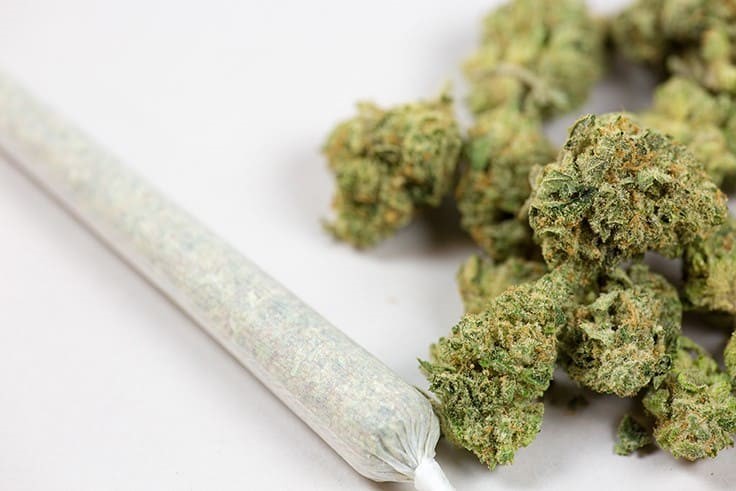Michigan’s Weekly Adult-Use Cannabis Sales Exceed Medical Sales for First Time
Marijuana Industry News June 18, 2020 MJ Shareholders

Growing cannabis at scale requires considerably more detailed planning than your average backyard garden—especially when it comes to designing and building your cultivation facility in a mid- and post-pandemic economy. Beyond the importance of site location, factoring in workflow and labor efficiency are equally critical these days.
A strategically designed facility with labor-saving automation creates a solid foundation for your cultivation team to work safely and efficiently, and gives them the tools they need to focus on optimizing yields and quickly addressing issues that arise.
Here are four key facility design factors every cultivation operator should keep at the top of their mind.
1. Location Matters More Than You Think
What’s the cost of your facility site location? We’re used to answering that question using cost per square foot, but there is so much more that goes into it, and you can save yourself time and money by picking a location that works—rather than forcing one that doesn’t.
This holds especially true in rural areas.
Rural locations often look dirt cheap until you have to figure out how you’re going to access power, water and sewer.
Utility access alone can make a more expensive urban or suburban site a better overall value. While building facilities in states such as Arkansas, California, Colorado, Illinois, Maryland, Michigan, Oklahoma, Pennsylvania and Virginia, I have seen business operations held up for months and even years while waiting for electricity providers to provide adequate power capacity to the facility sites.
Consider your water needs as well, factoring in canopy size, whether or not you will process on site and the number of employees you will have. Your water source must meet public safety standards due to federal and state Department of Environmental Quality (DEQ) regulations for commercial businesses.
In rural areas, where public water supplies and sewer access often don’t suffice (or don’t exist), the only option is to dig a well and treat it for potable water on-site, and then install a septic system for waste. Potable water sources also require more upkeep and DEQ testing. And wait, you’re not done with that water just yet: Once it becomes wastewater, you will have to deal with it in accordance with state and local regulations for permitted disposal. That means anything from dumping it down the drain (very cheap if your site already has sewer access) to installing a $40,000 evaporation tank or a zero-waste solution.
You can manage any of these potential utility issues with proper planning, but it’s imperative you know what you’re getting into before you sign off on a location.
2. Workflow and Containment of Contaminants
Workflow is a much bigger concern for today’s cultivators than it had been before the global pandemic, because now concerns about plant diseases and pest outbreaks are coupled with preventing coronavirus exposure among crewmembers.
Limiting potential spread is key either way, so your facility design should incorporate the movement of people as well as plants. There’s no reason a packaging person should walk through the pre-harvest area, for example.
Similarly, if the way your plants and employees move through your space means that your propagation area is vulnerable to contamination, then you are leaving the health of your mother plants, seedlings and clones to chance. It’s necessary to protect them with a design that fully isolates them.
Another aspect of workflow to consider is automating processes such as irrigation and trimming, which reduces the labor needs across the facility and also the potential for coronavirus exposure among workers.
3. The Flower Room Factor
The most important phase of cannabis cultivation is the flowering stage, and that’s why you want to base your entire design around having multiple flower rooms that are consistent in size. The flow of seedlings and clones to vegetative rooms and beyond is defined by the size of your flower rooms. If your flower rooms are different sizes, you will forever be conducting multiple orchestras within the same auditorium at the same time.
From there, design to properly channel movement within the facility. Ideally, each step in the process flows to an adjacent room, without any unnecessary steps—literally. Fewer steps taken by workers mean tasks can be completed faster, which saves time and money by reducing staffing needs. Smart workflow improves labor efficiency and, more critically, lessens the chance of cross-contamination.
4. Pay for Good Design Once
You may have noticed a theme here: The cheaper option on Day One is often much more expensive on Day 500. You can invest in good design, architecture and materials up front, or you can manage the costly consequences for the life of your facility.
In the past, much of the industry was flying blind, and for many, it made some sense to go cheap and hope for the best. Now that we have established a strong base of industry knowledge—and there are many excellent architects and design consultants out there—you get what you pay for.
Your initial design is your seed. If you want your cultivation facility to thrive in the post-pandemic economy, you must create the right environment for growth.
Aaron Mullins is a certified electrical journeyman and Systems Coordinator for Next Big Crop, a full-service cannabis consulting firm with decades of collective expertise in license procurement; facility design and construction; systems engineering; equipment and materials sourcing; operations management; and compliance. He has led design and installation of automated systems for facilities from 10,000 square feet to more than 200,000 square feet.
MJ Shareholders
MJShareholders.com is the largest dedicated financial network and leading corporate communications firm serving the legal cannabis industry. Our network aims to connect public marijuana companies with these focused cannabis audiences across the US and Canada that are critical for growth: Short and long term cannabis investors Active funding sources Mainstream media Business leaders Cannabis consumers









